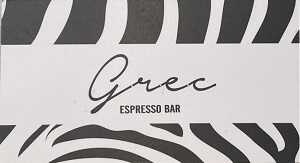During the pandemic crisis of 2020, as Internet traffic grew substantially, new opportunities arose for a paradigm shift in the general e-commerce domain. The Fashion Industry, being one of the most heavily impacted fields by this digital transformation, has changed significantly, continuously exploring new methods for user engagement. To this end, the adoption of immersive and three-dimensional (3D) technologies like Virtual, Augmented, and Mixed Reality (xR), as well as new gamification approaches, has proven a valuable ally. In fact, in an effort to increase profits, fashion shops are now turning to these technologies to offer novel advertising campaigns and organize entertaining user-centric marketing events that will solidify their online presence and create long-term customer relationships. Past research indicates that sensory approaches, which concern the details of a garment and how it is perceived, in parallel with immersive technologies, effectively bridge the gap between consumers and traders, and come as a strong response to the slowdown in clothing production caused by the coronavirus pandemic (Silvestri, 2020). In this paper, we focus on such technologies and how they can be leveraged to pave the way for the new virtual fashion era in terms of both User Interaction (UI) and User Experience (UX).
Objective:
For online shopping, the purchase of fashion-related products has traditionally been made as easy as clicking a button. However, this comes at a cost of distancing customers who are wary of the quality of the promoted goods and wish for a personalized engagement. Considering that competition for customer loyalty is incredibly high (Smink, et al., 2019), a fact that was clearly demonstrated during the pandemic, the fashion industry is now adopting new audiovisual merchandising tools, making use of immersive xR and gamification technologies (Tobon, et al., 2020). Still, unlike traditional UI/UX methods, the effects attributed to a combination of immersive approaches have not yet been sufficiently addressed by existing literature. As fashion is made up of two crucial elements, one relating to the general culture and mentality of the market, while the other to the quality of the garment brand and material, designing these aspects in a creative manner can potentially induce high benefits and evoke more sensory experiences. The objective here is to imprint these technologies and study basic psychological theories of human motivation to determine which elements and mechanisms pose a positive impact on fashion e-commerce for the creation of easy-to-use, interactive, and user-centric applications.
Method:
To tackle our objective, an application prototype targeted at mobile device/smartphone users, which constitute an increasingly large portion of the fashion market, is designed to facilitate user-centric interactions through immersive technologies. In conjunction with the latest UX and UI trends, the prototype aims to exemplify how xR can create the right conditions for a complete and ready-to-use fashion application, that will improve user experience via customized and highly interactive means of engagement. Given that the visual components should be entertaining and accessible, a fact that increases complexity in terms of audiovisual augmentation, the outlined methodology additionally sheds light on possible implementation roads that will mitigate this danger.
Further, the prototype acts as a use-case for the study of the technologies and their impact on customer perception and pleasure, variables that define their inclement towards long-term brand bonding. Thus, the monitored elements also include human factors and ergonomics (Aromaa, 2018). To capture the reactions and emotional imprint, a comprehensive small-scale user evaluation scenario is conducted. The developed questionnaire examines usability and satisfaction outcomes to assess past research findings that mention immersive technologies as a wave of transformation in the field of fashion. Preliminary results showcase the potentiality of the embedded 3D content, while separately exploring the effectiveness of the underlying interactive and gamification appliances in providing new ways for graphical user interaction with fashion products and e-commerce services.
Conclusion:
In this paper, we investigate novel approaches relating to the “marriage” of immersive xR technologies with gamification interactive services for user experience enhancement in the online fashion industry. However, due to the ongoing socio-economic conditions caused by the coronavirus pandemic, these technologies are still in their infancy and face various challenges. Therefore, after acknowledging the general UI/UX principles for designing interactive and friendly e-shops, a corresponding mobile application is prototyped and evaluated to further investigate their impact on sensory attitudes. The results show a positive correlation between the incorporated immersive technologies and user satisfaction, allowing the entry into a metaverse era that creates new perspectives for the fashion vendors while contributing positively to customer loyalty and profit growth.
References:
Silvestri, B. (2020). The Future of Fashion: How the Quest for Digitization and the Use of Artificial Intelligence and Extended Reality Will Reshape the Fashion Industry After COVID-19. ZoneModa Journal, 10(2), 61-73.
Smink A., Frowijn A., van Reijmersdal E., van Noort G., & Neijens P. C. (2019). Try online before you buy: How does shopping with augmented reality affect brand responses and personal data disclosure. Electronic Commerce Research and Applications, 35, 100854.
Tobon, S., Ruiz-Alba, J. L., & García-Madariaga, J. (2020). Gamification and online consumer decisions: Is the game over?. Decision Support Systems, 128, 113167.
Aromaa, S., Väätänen, A., Kaasinen, E., Uimonen, M., & Siltanen, S. (2018, October). Human factors and ergonomics evaluation of a tablet based augmented reality system in maintenance work. In Proceedings of the 22nd International Academic Mindtrek Conference (pp. 118-125).
Back
SPONSORS
 Agora Restaurant Grill House
Agora Restaurant Grill House Lupin Aperitivo Espresso Bar
Lupin Aperitivo Espresso Bar






























